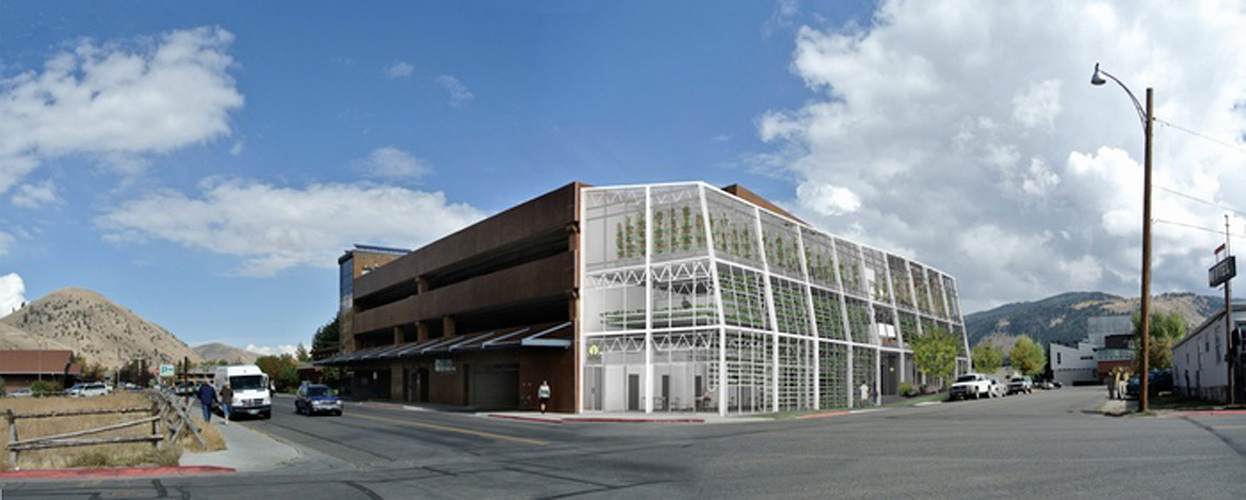The city of Jackson, Wyo., gets around 400 inches of snow falls a year, and its valley location means most of the city’s produce is brought in from other places, ArchPaper reports. With these two conditions, there can be times when the city is cut off and becomes a food desert.
This sparked the concept of building vertical gardens so the city has a better chance of self-sustaining when it comes to fresh produce. Sustainable community specialist Penny McBride and designer Nona Yehia came together and founded Vertical Harvest Jackson Hole, which will construct a three-story, 13,500-sf hydroponic greenhouse to be placed on leftover land that’s only one-tenth of an acre. The company enlisted Larssen Ltd. to engineer the greenhouses and assist with design.
Though the greenhouses may be lean and narrow, the multiple stories add up to five acres of agricultural space. A timed, carousel system will revolve trays of plants to maximize south sun exposure.
“We will be growing 100,000 pounds of vegetables a year,” Yehia said, adding that the produce can be sold to restaurants, hospitals, and the local community.
Fruits and vegetables aren’t the only thing Vertical Harvest will produce—jobs will also be part of the greenhouse’s repertoire.
“Vertical Harvest will establish an innovative model to employ an under-served Wyoming population: adults with developmental disabilities,” the firm said in a statement.
The greenhouses are slated to open in December 2015.
Related Stories
| Aug 11, 2010
AIA Course: Building with concrete – Design and construction techniques
Concrete maintains a special reputation for strength, durability, flexibility, and sustainability. These associations and a host of other factors have made it one of the most widely used building materials globally in just one century. Take this free AIA/CES course from Building Design+Construction and earn 1.0 AIA learning unit.







